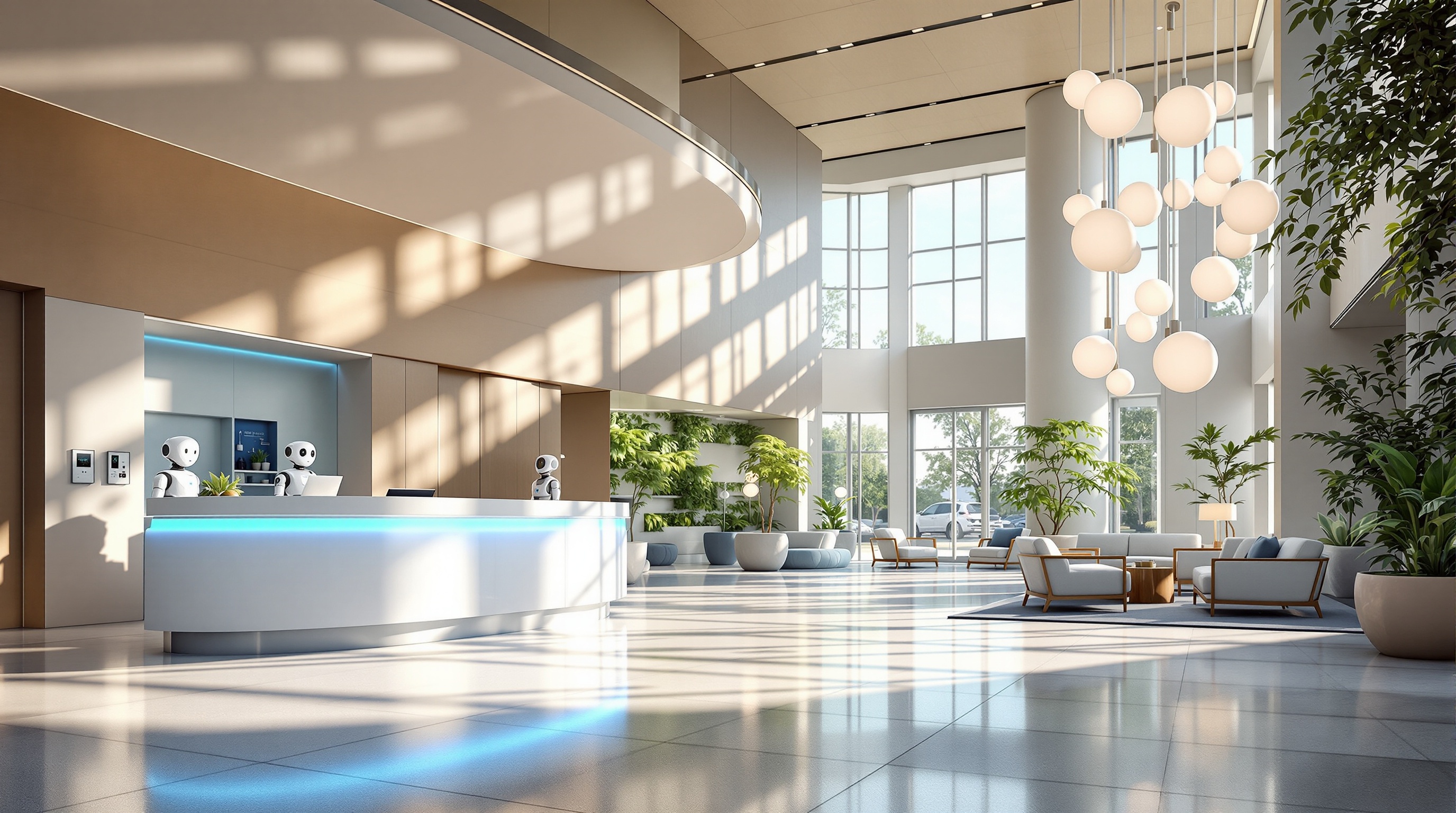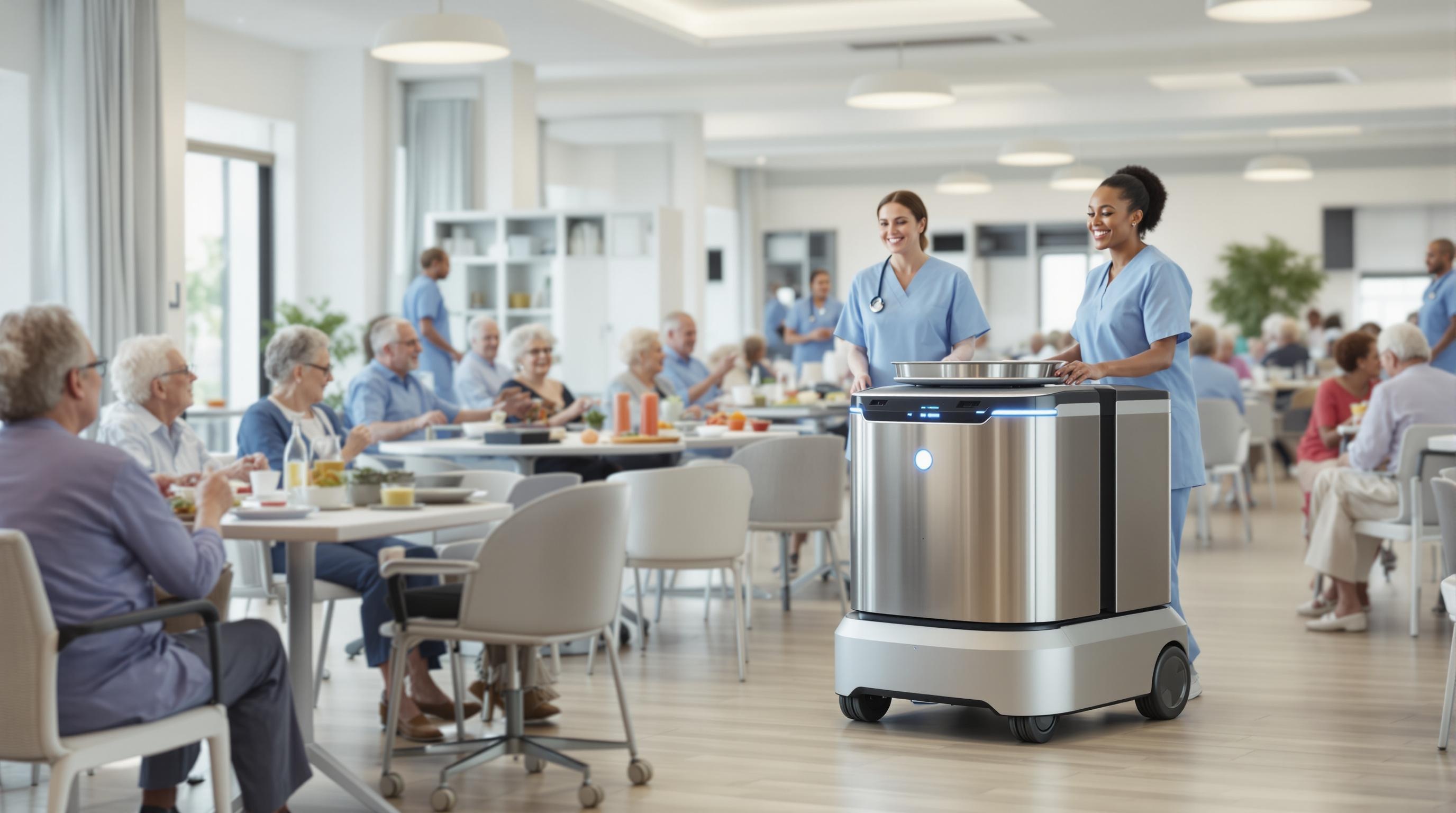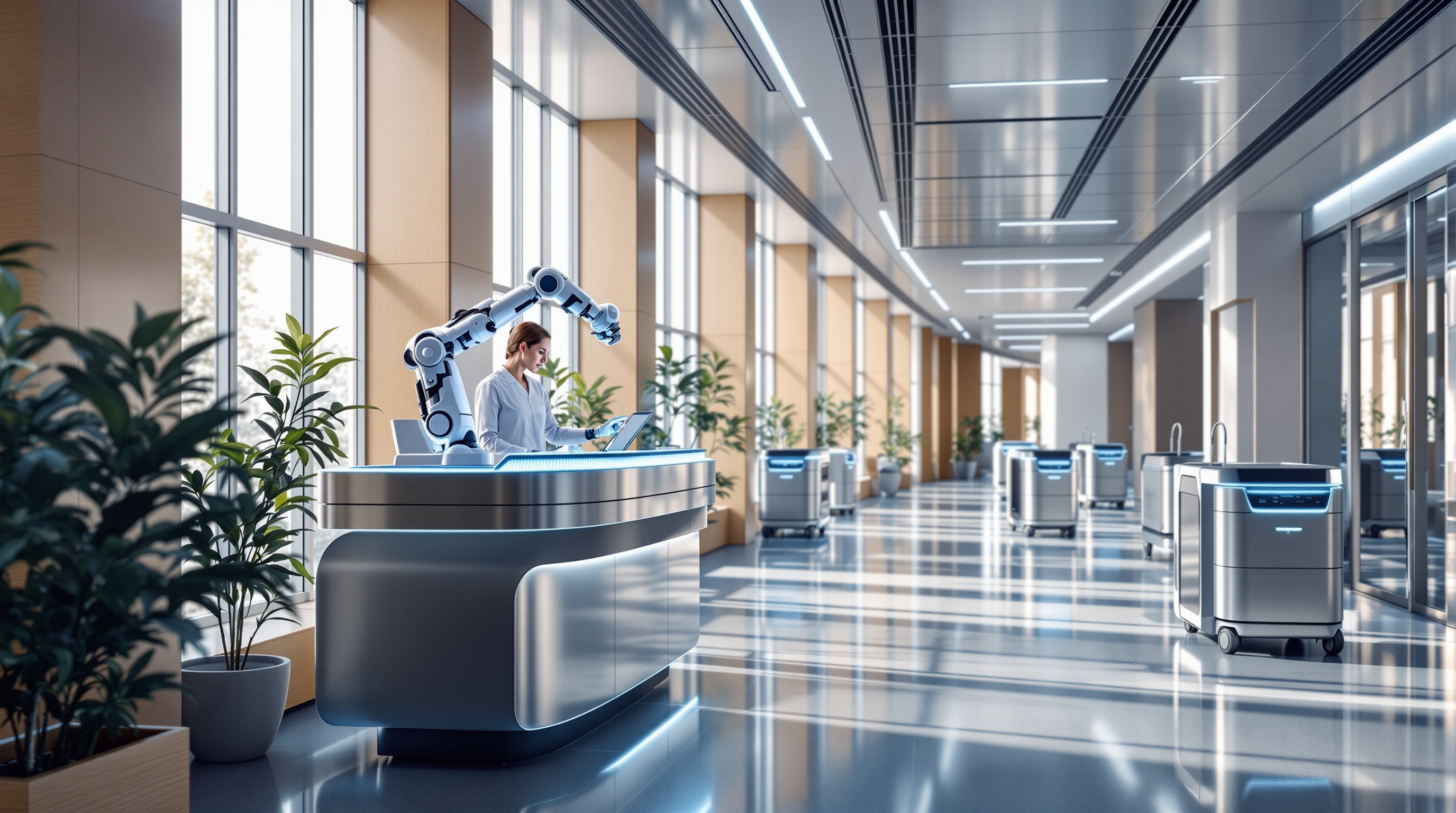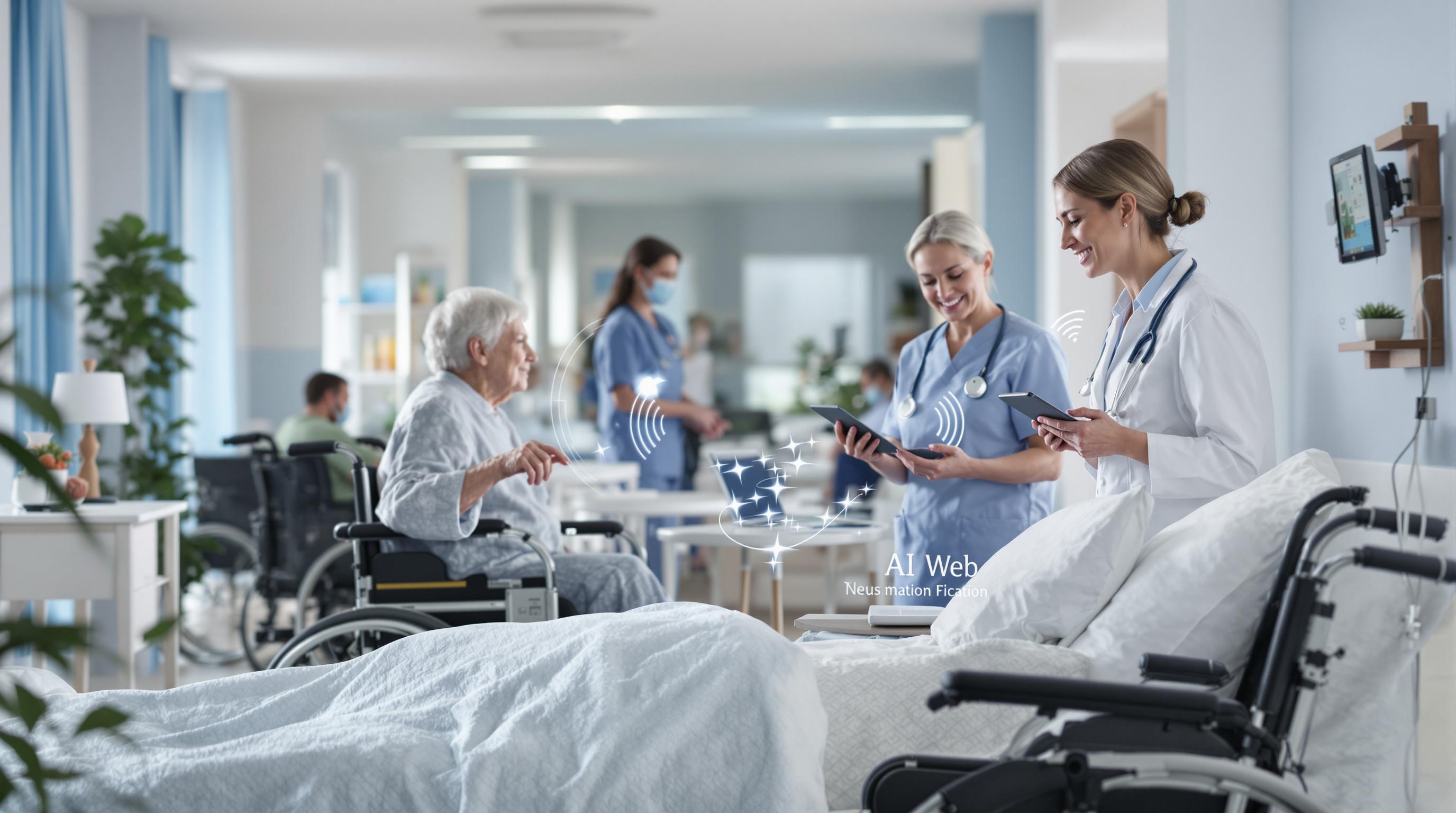How Robot Vacuuming Transforms Nursing Homes for Staff & Residents
Discover how robot vacuuming in nursing homes boosts cleanliness, improves staff retention, and enhances resident care in skilled nursing facilities.
Quick Navigation
- 1. Introduction
- 2. Current Challenges in Robot Vacuuming Nursing Homes
- 3. How Sparkco AI Transforms Robot Vacuuming Nursing Homes
- 4. Measurable Benefits and ROI
- 5. Implementation Best Practices
- 6. Real-World Examples
- 7. The Future of Robot Vacuuming Nursing Homes
- 8. Conclusion & Call to Action
1. Introduction
Did you know that more than 1 in 10 people in Japan are now over the age of 80? As the global population continues to age, skilled nursing facilities around the world are facing mounting pressures: rising operational costs, persistent staffing shortages, and an increasing demand for high-quality resident care. According to recent research, these challenges have prompted a surge in the adoption of innovative technologies—including autonomous robot vacuums—to help bridge critical workforce gaps and maintain sanitary environments.
For many nursing homes, keeping up with daily cleaning demands is no small feat, especially as infection control remains a top priority. Traditional cleaning routines are labor-intensive and can divert valuable staff resources away from direct resident care. This is where robot vacuuming is making a transformative impact. Not only are these advanced machines automating routine sanitation tasks, but studies also suggest their integration is linked to higher employee retention, improved productivity, and better patient care.
In this article, we’ll explore how robot vacuuming is revolutionizing skilled nursing facilities. We’ll dive into the benefits these technologies bring to both staff and residents, examine real-world research on their effectiveness, and discuss what facility leaders should consider when implementing robotic cleaning solutions. Whether you’re a nursing home administrator, healthcare professional, or simply interested in the future of elder care, read on to discover how robot vacuums are helping to redefine cleanliness—and care quality—in today’s nursing homes.
2. Current Challenges in Robot Vacuuming Nursing Homes
The integration of robot vacuum cleaners in nursing homes promises to improve efficiency and hygiene standards. However, healthcare facilities face a unique set of challenges when deploying this technology. Below, we identify and explain the most pressing pain points, supported by current research and statistics, and discuss their impact on operations, compliance, and patient care.
-
Navigation and Obstacle Avoidance
Nursing homes are dynamic environments with frequent movement of residents, staff, and medical equipment. Robot vacuums often struggle to detect unexpected obstacles such as wheelchairs, walkers, or dropped items. According to a 2021 study in the International Journal of Environmental Research and Public Health, 68% of facility managers reported that navigation issues caused delays in cleaning schedules. -
Infection Control and Cross-Contamination
Maintaining strict infection control is paramount in healthcare settings. However, robot vacuums can inadvertently transfer pathogens between rooms or wards, especially if not sanitized between uses. The CDC emphasizes the significance of environmental cleaning in reducing healthcare-associated infections, yet only 32% of facilities using robot vacuums have protocols for routine disinfection of the devices. -
Compliance with Regulatory Standards
Healthcare facilities must comply with rigorous cleaning and documentation standards, such as those set by the Centers for Medicare & Medicaid Services (CMS). Robotic cleaning devices may not produce adequate logs or proof of cleaning for compliance audits, leading to potential regulatory risks. -
Noise and Resident Disturbance
Many elderly residents are sensitive to noise, and robot vacuums can be disruptive, particularly during rest periods. A survey published in Aging & Mental Health found that 41% of residents reported increased anxiety or sleep disturbances linked to environmental noise, including from cleaning equipment. -
Maintenance and Technical Support
Robot vacuums require regular maintenance to function optimally. Malfunctions or breakdowns can lead to gaps in cleaning coverage, increased operational costs, and the need for backup manual labor. According to McKnight’s Long-Term Care News, 54% of nursing homes cite technical issues as a significant barrier to robotic adoption. -
Initial Investment and Ongoing Costs
The upfront cost of purchasing commercial-grade robot vacuums, along with ongoing expenses for software updates, repairs, and staff training, can strain already tight budgets. A 2023 market analysis by Grand View Research found that healthcare facilities spend 15-20% more on maintenance for robotic cleaning equipment compared to traditional tools. -
Integration with Existing Workflows
Robot vacuums must work alongside staff without disrupting care routines. Poorly integrated solutions can lead to workflow bottlenecks, duplicated efforts, and staff frustration, ultimately impacting the quality of patient care.
In summary, while robot vacuuming offers promising benefits for nursing homes, current challenges—ranging from infection control and compliance to cost and workflow integration—can negatively impact operations and patient care. Addressing these obstacles is crucial for successful technology adoption in healthcare settings.
3. How Sparkco AI Transforms Robot Vacuuming Nursing Homes
Maintaining a clean and safe environment is essential in nursing homes, but traditional cleaning methods can be labor-intensive and disruptive. The introduction of robot vacuum technology brings new opportunities but also unique challenges, such as navigation in crowded spaces, sensitivity to residents’ needs, and seamless integration with facility operations. Sparkco AI offers advanced solutions that tackle these issues, ensuring that automated cleaning is both effective and unobtrusive.
-
Intelligent Navigation for Dynamic Environments
Sparkco AI’s robots use advanced sensors and real-time mapping to navigate the ever-changing layouts of nursing homes. They detect obstacles like wheelchairs, walkers, or moving residents, adjusting their paths instantly. This prevents accidents and ensures thorough cleaning without interfering with daily activities. -
Customizable Cleaning Schedules
With Sparkco AI, staff can set cleaning routines that align with the facility’s busy times and quiet hours. The robots automatically adapt, cleaning during appropriate windows to minimize noise and disruption, which is crucial for resident comfort and daily operations. -
Safety-First Design
The robots are equipped with sensitive bumpers and stop-on-contact features, ensuring they halt immediately if an unexpected object or person is detected. This protects vulnerable residents and gives staff peace of mind, addressing a key safety concern in healthcare settings. -
Remote Monitoring and Reporting
Facility managers gain complete oversight with Sparkco AI’s monitoring tools. Through a user-friendly dashboard, staff can track cleaning progress, receive maintenance alerts, and review performance history. This data-driven approach helps maintain high cleanliness standards and streamlines compliance reporting. -
Easy Integration with Facility Systems
Sparkco AI robots are designed to work alongside existing facility management software. Whether syncing with electronic health records for room occupancy or scheduling systems for coordinated cleaning, integration is simple and secure. This ensures smooth adoption without disrupting current workflows. -
Adaptable to Facility Expansion
As a nursing home grows, Sparkco AI’s robots can be easily added or reprogrammed to cover new areas. Their scalable software updates ensure the cleaning system evolves with the facility’s needs, offering a future-proof solution.
By combining advanced AI, user-friendly controls, and seamless software integration, Sparkco AI overcomes the common challenges of robot vacuuming in nursing homes. Facilities benefit from consistent cleanliness, reduced staff workload, and a safer environment for residents—all with minimal disruption. Sparkco AI’s solutions empower nursing homes to embrace automation with confidence, improving both operational efficiency and resident well-being.
4. Measurable Benefits and ROI
The integration of automated robot vacuuming solutions in skilled nursing facilities has proven to deliver significant returns on investment (ROI) and measurable operational benefits. As these facilities face increasing staffing shortages, stringent infection control requirements, and tight budgets, robotic cleaning technology offers a scalable, cost-effective solution. Below, we explore data-driven benefits, supported by industry case studies and research.
-
Time Savings: Up to 80% Reduction in Manual Labor
According to a CleanLink report, robotic vacuums can reduce the time spent on floor cleaning by up to 80%. In a 100-bed nursing home, manual vacuuming can take 2-3 hours daily. Robots can complete the same task in less than 45 minutes, freeing staff for more critical resident care activities.
-
Cost Reduction: Up to $30,000 Annual Savings
Facilities that automate floor care report significant cost reductions. One hospital case study documented a savings of $30,000 per year in labor, equipment maintenance, and supply costs after deploying robotic cleaners.
-
Enhanced Infection Control: 99% Reduction in Surface Debris
Effective floor cleaning is a cornerstone of infection prevention. Robots ensure consistent, thorough cleaning, achieving up to a 99% reduction in surface debris and dust, as reported by Kärcher Professional. This consistency supports compliance with CMS infection control standards.
-
Labor Shortage Mitigation: 1 FTE Reallocated per 75 Residents
By automating repetitive cleaning tasks, facilities can reallocate the equivalent of one full-time employee (FTE) per 75 residents to direct care roles, helping bridge the gap caused by staffing shortages (CleanLink).
-
Improved Compliance: 100% Documentation of Cleaning Protocols
Modern robotic vacuums feature cloud-based reporting, providing automatic, timestamped logs of cleaning activities. This improves regulatory compliance by ensuring 100% traceability and auditable records for surveyors and health inspectors (CleanLink).
-
Extended Floor Life: Up to 20% Longer Maintenance Cycles
Consistent robotic cleaning can extend floor finish life by up to 20%, reducing the frequency and cost of deep cleaning and floor replacement (CleanLink).
-
Resident Satisfaction: 25% Fewer Cleaning Complaints
Facilities report up to a 25% drop in resident and family complaints related to cleanliness after implementing robot vacuums (CMM Magazine), enhancing overall satisfaction scores.
-
Energy Efficiency: Up to 40% Less Power Consumption
Robotic vacuum units are designed for efficiency, using up to 40% less electricity compared to traditional equipment (Kärcher Professional), which contributes to sustainability goals and further cost savings.
The data clearly shows that automated robot vacuuming in nursing homes yields substantial ROI by slashing labor costs, improving compliance, and supporting infection control. With measurable impacts on staff allocation, regulatory readiness, and resident satisfaction, robotic cleaning is quickly becoming a best practice for forward-thinking long-term care facilities.
5. Implementation Best Practices
Integrating robot vacuum technology into nursing homes can enhance cleaning efficiency and support infection control. However, successful implementation requires a thoughtful, step-by-step approach to ensure compliance with CMS guidelines, resident safety, and staff acceptance. Below are best practices to guide your facility through a smooth rollout:
-
Assess Facility Needs and Suitability
Evaluate all areas for robot vacuum use, considering floor types, clutter, and specific cleaning demands. Involve environmental services, nursing staff, and infection preventionists in the assessment.
Tip: Map out high-traffic zones and restricted areas to optimize robot deployment.
Pitfall: Overlooking uneven flooring or thresholds can reduce effectiveness and create safety hazards. -
Research and Select Appropriate Devices
Choose robots designed for commercial use, with features such as HEPA filtration, obstacle detection, and programmable schedules. Ensure devices meet healthcare cleanliness standards.
Tip: Ask vendors about maintenance requirements and compatibility with facility WiFi.
Pitfall: Selecting consumer-grade models may lead to performance or durability issues. -
Engage Stakeholders Early
Gain buy-in from leadership, staff, residents, and families. Explain the benefits, address concerns, and outline how robots support, not replace, existing staff.
Tip: Host demonstrations and Q&A sessions to build confidence.
Pitfall: Insufficient communication can fuel resistance or misconceptions. -
Develop Policies and Training Programs
Create clear protocols for robot operation, troubleshooting, and cleaning schedules. Train staff on safety procedures, device care, and how to interact with robots during shifts.
Tip: Incorporate robot vacuuming into infection control and environmental services policies.
Pitfall: Inadequate training increases risk of misuse or device downtime. -
Pilot the Program in a Controlled Area
Start with a small section to monitor performance, gather feedback, and adjust protocols. Document successes and challenges before scaling up.
Tip: Select an area with regular foot traffic and varying cleaning needs for a comprehensive test.
Pitfall: Skipping the pilot phase can lead to widespread issues upon full deployment. -
Monitor, Evaluate, and Adjust
Regularly review cleaning outcomes, staff feedback, and resident safety. Use data to refine robot schedules, maintenance, and policies.
Tip: Establish a feedback loop with staff and residents to catch emerging concerns early.
Pitfall: Neglecting follow-up can result in declining performance or unaddressed safety risks. -
Maintain Regulatory Compliance
Ensure robot use aligns with CMS environmental safety standards and infection control guidelines. Document protocols and outcomes for survey readiness.
Tip: Regularly review CMS updates to adapt practices as needed.
Pitfall: Failing to document or update policies can jeopardize compliance during surveys. -
Support Ongoing Change Management
Foster a culture of innovation by celebrating successes, addressing concerns, and integrating robot vacuuming into daily routines. Recognize staff adaptability and encourage continuous feedback.
Tip: Appoint robot “champions” among staff to support peers and sustain momentum.
Pit










